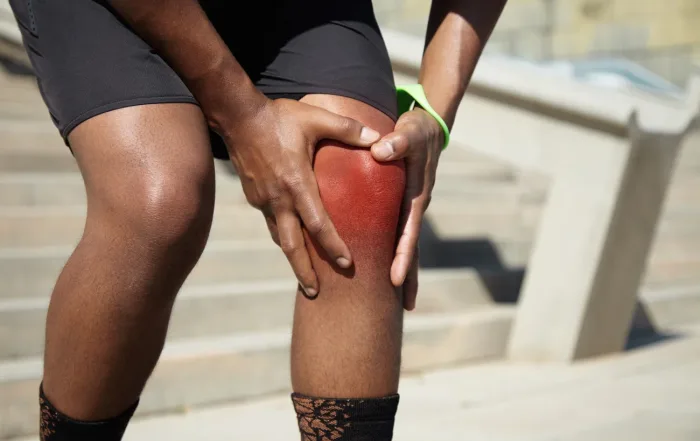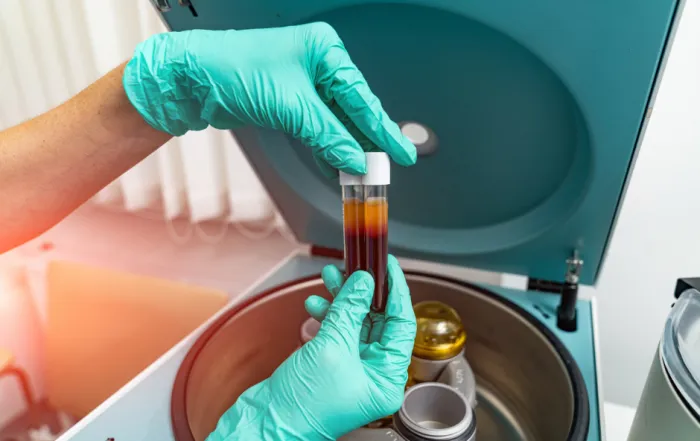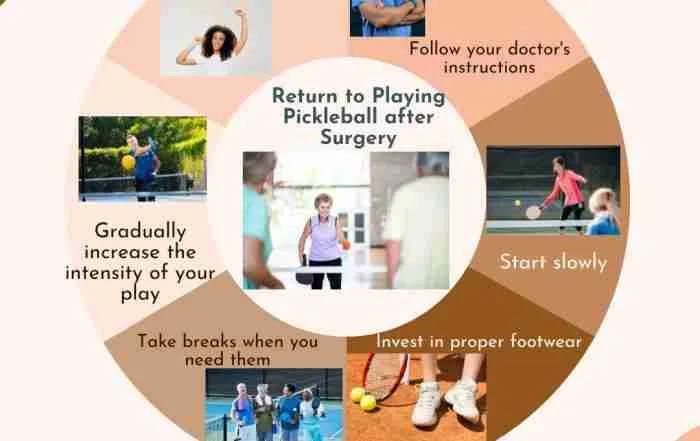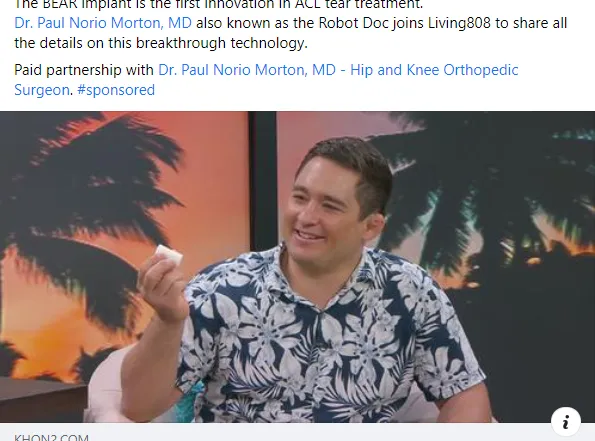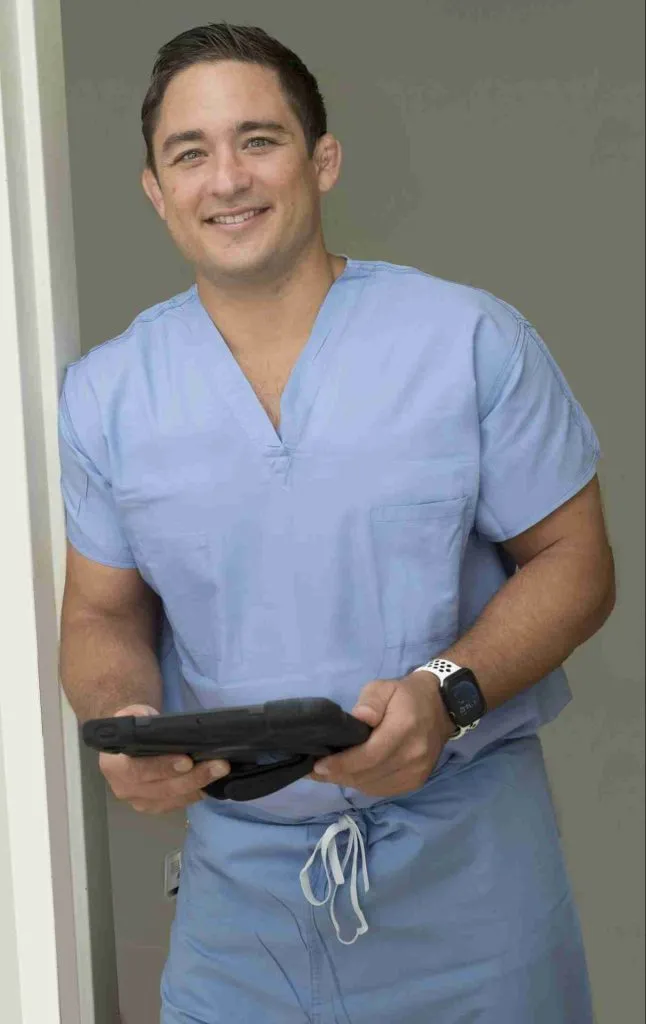Talk with Your Knee Expert Today!
Choose Dr. Morton as your Knee Expert Today!
- Board-certified, Fellowship Trained Knee Surgeon
- Experienced Orthopedic Surgeon
- Nonoperative and operative treatments available
- High success rate in treating Meniscus injuries, knee pain, and arthritis
- Minimally invasive surgery
- Latest Techniques
- Fellowship-trained and specialist in knee surgery
- Takes care of revision knee replacements and complex operations
- Trauma Surgeon at Level 1 Trauma Center – Queen’s Medical Center
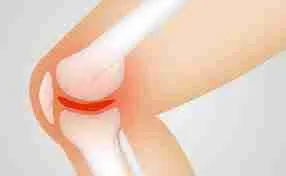
Content
Knee Anatomy – Menisci are Crucial to your Knees
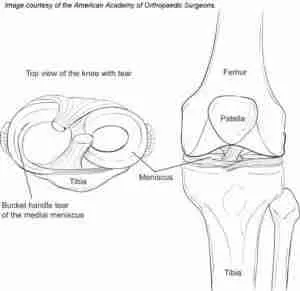
Acute versus Degenerative Meniscus Tears – Understanding their Differences Helps with Figuring Out your Prognosis
Tear Patterns in Meniscus Injuries – Can you heal your meniscus tear?
Meniscus Injury Treatment – Repair or meniscectomy?
Meniscus Repair vs Meniscectomy
A meniscus repair involves suturing the tear and anchoring it to keep the meniscus in place. A meniscectomy removes the meniscus or the damaged part of the meniscus. For acute tears, surgeons choose one intervention over the other depending on the zone and type of tear. Acute tears (not degenerative) treated surgically generally have favorable outcomes. Regardless of repair or meniscectomy, roughly 90% of patients will return to sport or have a satisfaction rate of 90%.
Degenerative tears are harder to treat. Because there is no acute tear, meniscectomies are often more appropriate than meniscus repairs. However, meniscectomies are not 100% successful either. For example, only 20% of patients in one study with degenerative tears who underwent meniscectomy had satisfactory results. Therefore, managing degenerative tears is often a multi-prong strategy, often including physical therapy and pain management.
Conclusion
Frequently Asked Questions about Meniscus Injuries
(FAQ)
Usually. Walking is unlikely to cause further damage to your knee. A bucket-handle meniscus tear that is impinged may limit your ability to walk. Call to schedule an appointment if you are concerned at 808.439.6201.
Results are variable. Dr. Morton may offer you a steroid shot and a course of physical therapy. This is designed to help you improve your strength and reduce your inflammation. Usually, the pain can improve over the course of 1 to 2 months.
A large repairable tear untreated may go on to develop arthritis years later. Arthritis can be a serious problem and a source of debilitating pain. For patients who already have a degenerative tear, a torn meniscus may eventually become asymptomatic. If you continue to have symptoms, Dr. Morton can offer to remove the offending meniscus.
This depends on the size or location of the tear. A large tear causing impingement like a bucket-handle tear is less likely to heal on its own and is likely to need surgery. Small degenerative tears often will stop being symptomatic after a short period of conservative treatment.
Related Pages
The Role of PRP in Treating Sports Injuries for Athletes
In the competitive world of sports, athletes constantly push their bodies to the limit, which, unfortunately, often leads to injuries. The quest for effective and swift recovery solutions is ongoing from tendonitis and [...]
Demystifying PRP Therapy: Understanding the Science Behind Platelet-Rich Plasma
In the quest for advanced healing techniques, Platelet-Rich Plasma (PRP) therapy emerges as a beacon of hope for those suffering from various orthopedic conditions, including osteoarthritis and tendon injuries like tennis elbow. This cutting-edge [...]
CBD in Orthopedic Practice: Enhancing Recovery and Well-being Beyond Opiates
The integration of Cannabidiol (CBD) in orthopedic practice offers a promising alternative to traditional opiate-based pain management.
Exploring the Relationship Between Joint Replacement and Running: Insights from a Recent Study
Introduction As an orthopedic surgeon specializing in joint replacement, I often encounter patients eager to return to their active lifestyles post-surgery. A common question is, "Can I return to running after my joint replacement?" [...]
Tips on Returning to Pickleball after Hip or Knee Replacement
[toc] What is Pickleball? Pickleball is a fun and exciting sport enjoyed by people of all ages. Its simple rules and low-impact nature make it an excellent option for people who want to stay [...]
How The BEAR Implant Works To Heal ACL Tears
Heal your ACL Tear Choose Dr. Morton as your Anterior Cruciate Ligament Surgeon Board Certified, Fellowship-trained Knee Surgeon Latest Technology High success rate Minimally Invasive surgery ACL [...]




